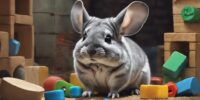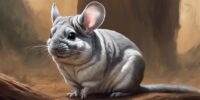How to Identify a Chinchilla's Age Through Physical Characteristics
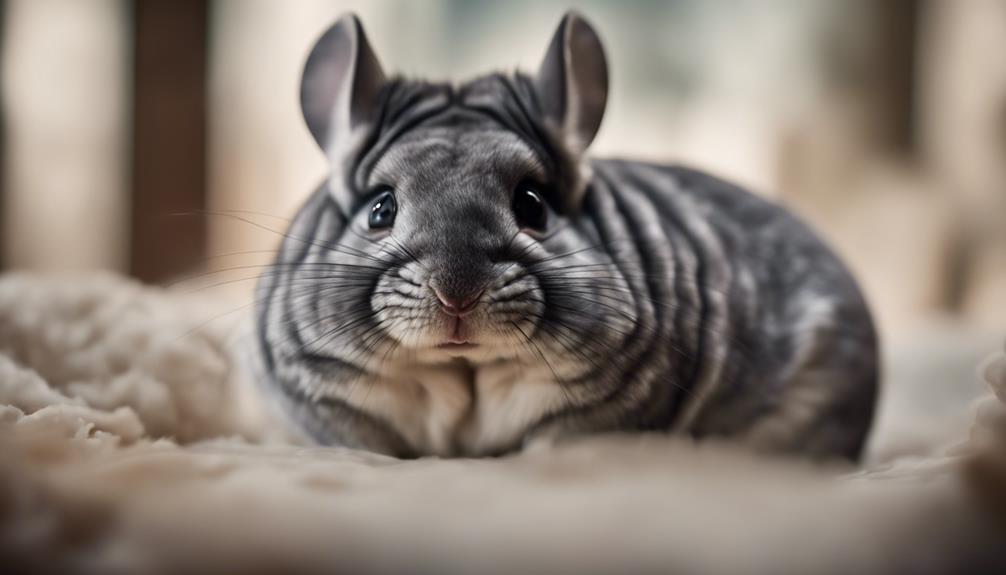
Observing a chinchilla's teeth can help determine age, as younger chinchillas have whiter teeth that tend to darken with age. Eye clarity and brightness also indicate youth, as cataracts may develop with age. A chinchilla's fur density decreases over time, with older chinchillas having thinner fur. Body size can be a clue, as younger chinchillas are smaller and more agile. Checking ear health is important, as older chinchillas may have more earwax buildup. Lastly, tail length can provide insight, as an older chinchilla may have a shorter, stiffer tail compared to a younger one.
These physical characteristics, when observed together, can help estimate a chinchilla's age.
Teeth Condition
When examining a chinchilla's age, assessing the condition of its teeth is crucial for an accurate estimation. Dental health in chinchillas is a key indicator of age due to their distinct growth patterns. Young chinchillas have sharp, clean teeth that are white and free from any signs of wear. As chinchillas age, their teeth undergo predictable changes. The dental wear patterns become more pronounced with age, with the teeth showing signs of yellowing, ridges, and possible malocclusion.
To estimate a chinchilla's age based on dental wear patterns, one must closely examine the incisors, molars, and premolars. Young chinchillas typically have small, clear incisors with minimal wear. However, as they age, the incisors become more yellow, and the chewing surfaces of the molars and premolars show visible signs of use.
Eye Clarity
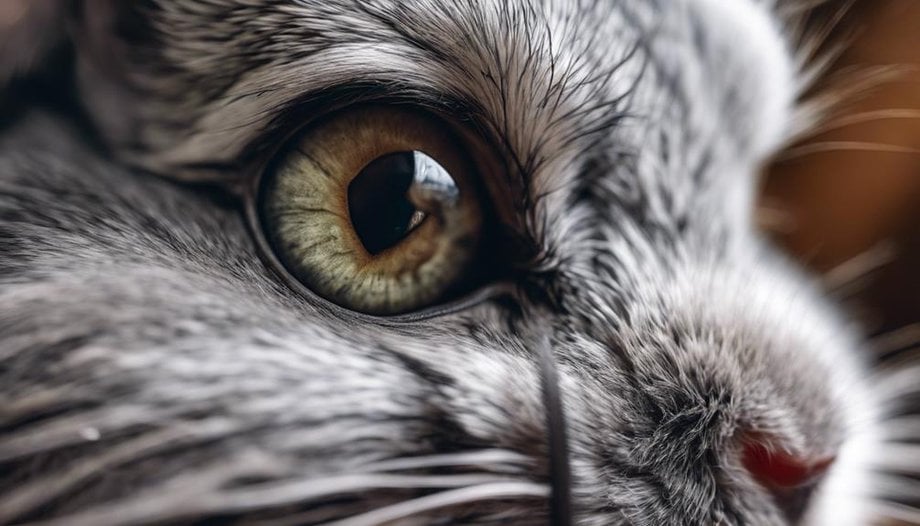
Chinchillas' eye clarity can provide valuable insights into their age. Observing the size of the pupil and changes in eye color can help determine the stage of maturity of a chinchilla.
Pupil Size
To determine a chinchilla's age accurately, observing the pupil size for eye clarity can provide valuable insights. Changes in pupil size can indicate different stages of a chinchilla's life, aiding in age estimation. When assessing a chinchilla's eyes, it's essential to look for clarity and any abnormalities that may affect the pupil size.
Behavioral changes, such as reduced activity or altered sleep patterns, may also be linked to shifts in pupil size due to age-related factors. It's crucial to monitor these changes regularly to gain a comprehensive understanding of the chinchilla's age and overall well-being.
- Regularly check for changes in pupil size
- Note any abnormalities affecting pupil size
- Monitor behavioral changes
- Consult a veterinarian for professional guidance
Eye Color
Eye color in chinchillas serves as a crucial indicator of eye clarity and can provide valuable insights into their overall health and age. The genetics of chinchillas play a significant role in determining their eye color, with various shades such as black, red, pink, and even dark ruby being common. Breeding practices can also influence eye color, as certain pairings may result in specific color variations. In terms of health, clear and bright eyes typically indicate a chinchilla in good condition, while cloudiness or changes in eye color could signify underlying health issues that require attention. Monitoring changes in eye color is essential for chinchilla owners to ensure the well-being of their pets.
| Eye Color | Genetics | Health |
|---|---|---|
| Black | Determined by | Clear and |
| Red | genetics | bright eyes |
| Pink | Breeding | Good health |
| Dark Ruby | practices | Concern if |
| changes occur |
Fur Density
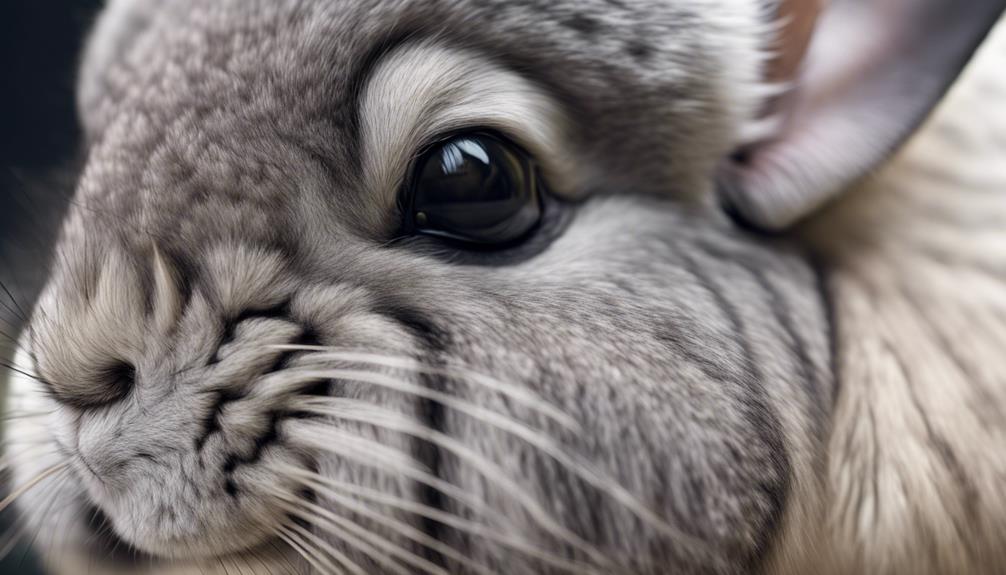
How does the fur density of a chinchilla change as it ages? Chinchillas' fur density can provide valuable insights into their age. As these creatures grow older, their fur density may undergo noticeable alterations that can help in estimating their age accurately.
- Thinning Fur: Older chinchillas often experience a gradual thinning of their fur density. This decrease in density can be observed particularly in areas such as the back and sides.
- Patchy Fur: Age-related changes can lead to patchiness in the fur density of chinchillas. This patchiness may become more prominent as the chinchilla advances in age.
- Coat Roughness: The texture of a chinchilla's coat may change with age, becoming rougher or less plush due to alterations in fur density.
- Color Variations: Changes in fur density can sometimes affect the color appearance of a chinchilla's coat, with older chinchillas potentially showing variations in color intensity.
Activity Level
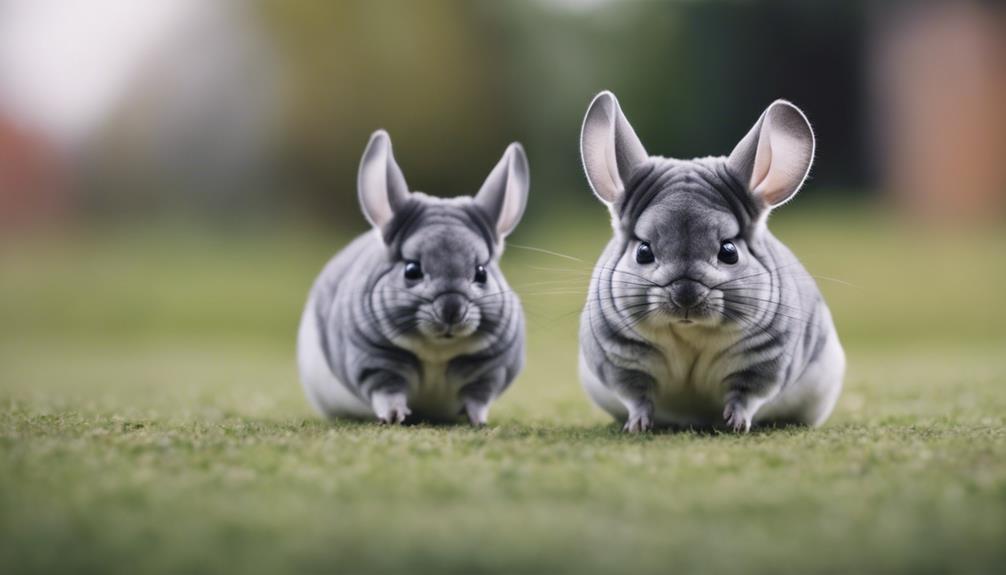
The activity level of a chinchilla can provide valuable insights into its age.
Assessing the energy level and observing behaviors can help determine if a chinchilla is young or old.
Young chinchillas tend to be more active and playful, while older ones may exhibit a more subdued demeanor.
Energy Level Assessment
Assessing a chinchilla's energy level involves observing its activity throughout the day to gauge its overall vitality and health. Chinchillas with high energy levels are often more engaged and interactive, displaying a playful demeanor. On the other hand, those with lower energy levels may exhibit lethargy and decreased movement.
To accurately assess a chinchilla's energy level, consider its resting habits, as they can provide valuable insights into its overall health. Here are four key indicators to look for:
- Frequency of movement and play
- Level of engagement with toys or companions
- Resting patterns throughout the day
- Response to external stimuli
Understanding these aspects can help caretakers ensure the chinchilla's well-being and adjust their care accordingly.
Behavior Observation
Observing a chinchilla's behavior can provide valuable insights into its activity level and overall well-being. When assessing a chinchilla's behavior, key aspects to consider include grooming habits, sleeping patterns, vocalizations, and social interactions. Understanding these behaviors can help caregivers gauge the chinchilla's health and happiness. Chinchillas are meticulous groomers, often seen dust bathing to maintain their fur's cleanliness. Monitoring their grooming habits can indicate if they are stressed or unwell. Additionally, chinchillas are crepuscular, meaning they are most active during dawn and dusk, displaying playful behavior during these times. Observing their sleeping patterns can reveal if they are getting adequate rest. Vocalizations and social interactions also play a crucial role in understanding a chinchilla's behavior, as they communicate through various sounds and interactions with their companions.
| Behavior Aspect | Description | Importance |
|---|---|---|
| Grooming Habits | Chinchillas are meticulous groomers, often seen dust bathing to maintain fur cleanliness. | Indicates health and stress levels |
| Sleeping Patterns | Chinchillas are crepuscular, most active during dawn and dusk. Observing sleep patterns is crucial. | Reveals if they are getting enough rest |
| Vocalizations | Chinchillas communicate through various sounds. Understanding vocalizations is key to their needs. | Helps decipher chinchilla's requirements |
| Social Interactions | Chinchillas are social animals; monitoring their interactions with others can indicate well-being. | Shows if they are happy and content |
Body Size
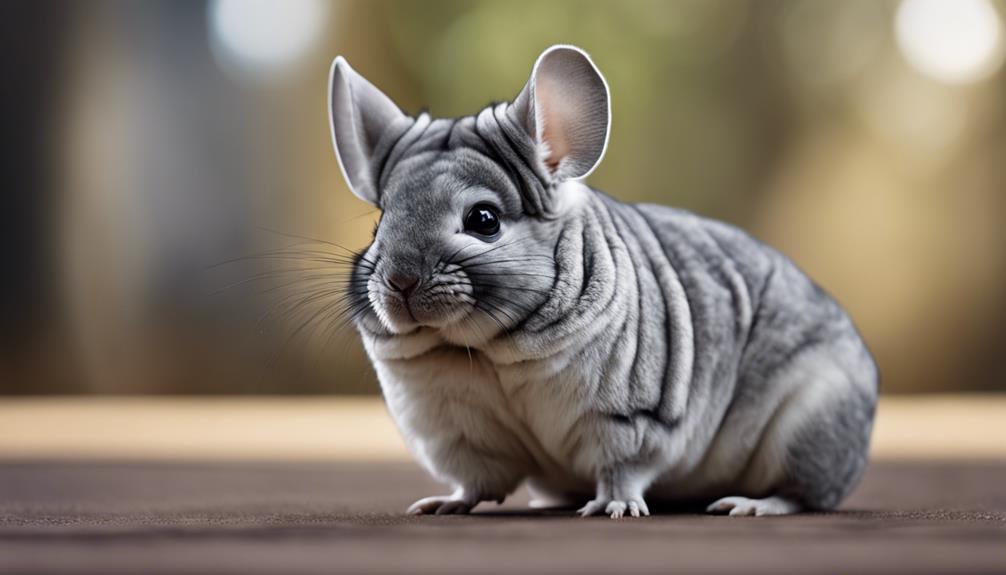
A chinchilla's age can be estimated by examining its body size and proportions. When considering body size as an indicator of age in chinchillas, several key points should be noted:
- Growth Rate: Chinchillas experience rapid growth during their first few months of life. Young chinchillas tend to be smaller in size compared to adults, and their bodies are still developing.
- Body Proportion: Juvenile chinchillas often have disproportionate body parts, such as larger heads or shorter limbs, which can indicate their young age.
- Bone Development: Young chinchillas have bones that are still growing and fusing, leading to certain body parts appearing more delicate or less sturdy.
- Muscle Tone: Older chinchillas typically have more developed muscle tone due to their physical maturity, whereas younger chinchillas may appear less muscular.
Ear Health
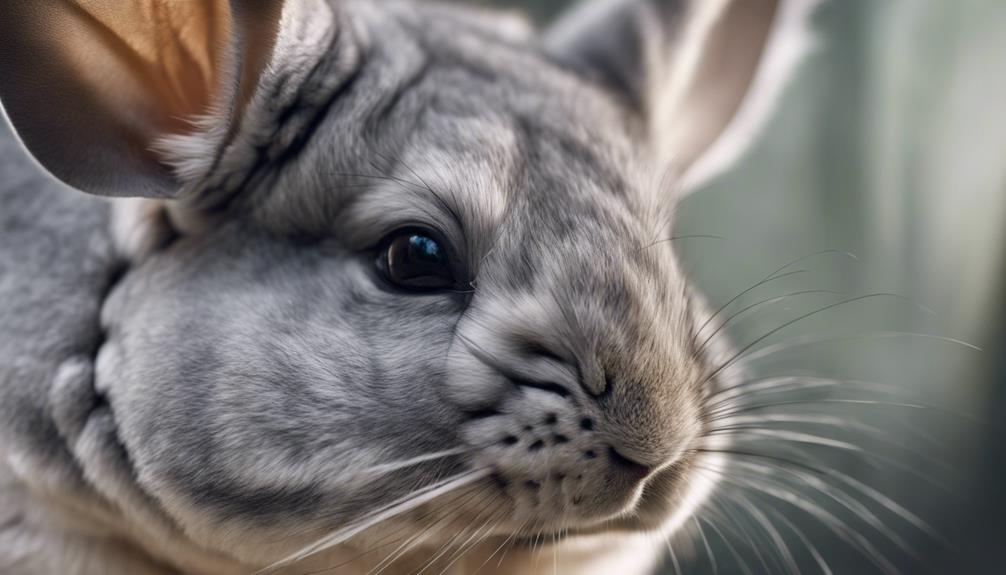
Regularly inspecting a chinchilla's ears is crucial for maintaining their overall health and well-being. When checking ear cleanliness, look for any signs of dirt, discharge, or wax buildup. Clean ears are typically pale pink and free of debris.
If you notice excessive dirt or buildup, gently clean the ears with a damp cotton ball to prevent potential issues. Ear infections can occur in chinchillas and are often indicated by redness, swelling, or a foul odor. If an ear infection is suspected, it's essential to seek veterinary care promptly for proper diagnosis and treatment.
Preventative measures such as regular ear checks and keeping the chinchilla's living environment clean can help reduce the risk of ear infections. By staying vigilant and addressing any concerns promptly, chinchilla owners can help ensure their furry companions maintain optimal ear health.
Tail Length
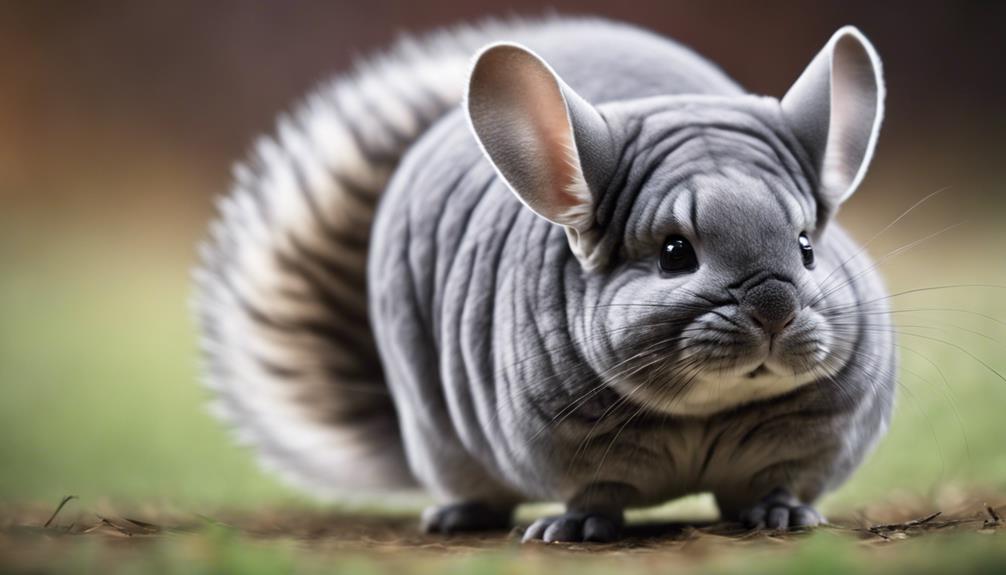
Chinchillas typically have tails that measure around 5-6 inches in length, which play a vital role in their balance and communication within their social groups. Tail growth in chinchillas can provide valuable insights into their age. Here are some key points to consider when examining a chinchilla's tail for age estimation:
- Length Comparison: Compare the tail length to the average for different age groups to gauge where the chinchilla might fall in terms of maturity.
- Fur Density: Younger chinchillas may have denser fur around the base of their tails, which tends to thin out as they age.
- Flexibility: The flexibility of the tail can decrease with age, becoming slightly stiffer over time.
- Overall Condition: Assess the overall condition of the tail, looking for signs of wear and tear that may indicate advanced age.
Frequently Asked Questions
What Are Some Common Health Issues That Can Affect a Chinchilla's Age?
Common health issues affecting a chinchilla's age include dental problems, respiratory infections, and gastrointestinal stasis. Regular veterinary check-ups, a balanced diet, and providing a stress-free environment are crucial care requirements to ensure a chinchilla's well-being and longevity.
Can a Chinchilla's Age Be Accurately Determined Through DNA Testing?
Genetic testing is a precise method for age determination in chinchillas. Through DNA evidence, accuracy is ensured. This scientific approach provides concrete data, allowing owners to know their chinchilla's age with certainty, enhancing care strategies.
Are There Any Specific Behavioral Changes That Occur as a Chinchilla Ages?
As a chinchilla ages, behavior changes may occur, affecting socialization patterns. Activity levels might decrease, and alterations in sleep patterns could be observed. These shifts are important indicators of the chinchilla's aging process and overall well-being.
How Does Diet and Nutrition Play a Role in Determining a Chinchilla's Age?
Diet and nutrition significantly impact a chinchilla's dental health and weight management. A balanced diet rich in fiber is crucial for maintaining proper dental wear and preventing obesity, with hay being a staple.
Is There a Correlation Between a Chinchilla's Age and Its Ability to Reproduce?
As a chinchilla ages, there is a correlation between its age and reproductive capacity. Older chinchillas may experience a decline in fertility rate and exhibit senescence markers, impacting their ability to reproduce efficiently. This process is influenced by various physiological changes.


